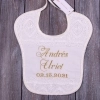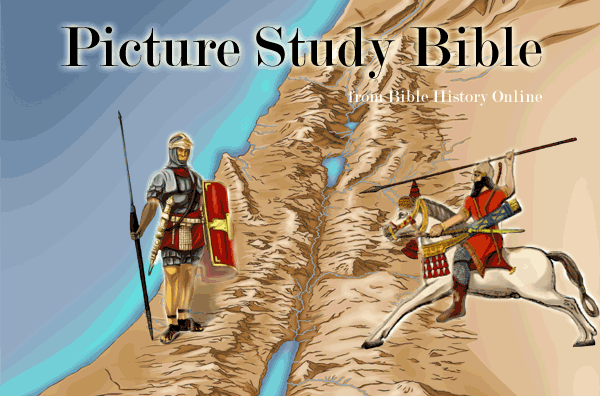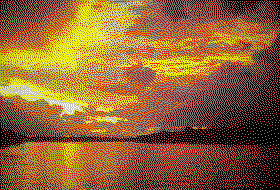Nahum 2:3 The shield of his mighty men is made red, the valiant men are in scarlet: the chariots shall be with flaming torches in the day of his preparation, and the fir trees shall be terribly shaken. - Free Bible Online
Nahum 2:3 The shields of his mighty men are [colored] red, The warriors are dressed in scarlet, The chariots are [enveloped] in flashing steel When he is prepared [to march], And the cypress [spears] are brandished.
3. his mighty men--the Medo-Babylonian general's mighty
men attacking Nineveh.
made red--The ancients dyed their bull's-hide shields red, partly
to strike terror into the enemy, chiefly lest the blood from wounds
which they might receive should be perceived and give confidence to the
foe [CALVIN].
G. V. SMITH conjectures that the reference is to the red
reflection of the sun's rays from shields of bronze or copper, such as
are found among the Assyrian remains.
in scarlet--or crimson military tunics (compare
Mt 27:28).
XENOPHON mentions that the Medes were fond of this
color. The Lydians and Tyrians extracted the dye from a particular
worm.
chariots . . . with flaming torches--that is, the
chariots shall be like flaming torches, their wheels in lightning-like
rapidity of rotation flashing light and striking sparks from the stones
over which they pass (compare
Isa 5:28).
English Version supposes a transposition of the Hebrew
letters. It is better to translate the Hebrew as it is, "the
chariots (shall be furnished) with fire-flashing scythes"
(literally, "with the fire," or glitter, of iron weapons). Iron
scythes were fixed at right angles to the axles and turned down, or
parallel to it, inserted into the felly of the wheel. The Medes,
perhaps, had such chariots, though no traces of them are found in
Assyrian remains. On account of the latter fact, it may be better to
translate, "the chariots (shall come) with the glitter of steel
weapons" [MAURER and G. V. SMITH].
in the day of his preparation--JEHOVAH'S
(Isa 13:3).
Or, "Medo-Babylonian commander's day of preparation for the
attack"
(Na 2:1).
"He" confirms this, and "his" in this verse.
the fir trees--their fir-tree lances.
terribly shaken--branded so as to strike terror. Or, "shall be
tremulous with being brandished" [MAURER].
JFB.
Questions Related to this Verse
Select a Chapter
Select a Book of the Bible
-
Genesis |
Exodus |
Leviticus |
Numbers |
Deuteronomy |
Joshua |
Judges |
Ruth |
1 Samuel |
2 Samuel |
1 Kings |
2 Kings |
1 Chronicles |
2 Chronicles |
Ezra |
Nehemiah |
Esther |
Job |
Psalms |
Proverbs |
Ecclesiastes |
Song of Solomon |
Isaiah |
Jeremiah |
Lamentations |
Ezekiel |
Daniel |
Hosea |
Joel |
Amos |
Obadiah |
Jonah |
Micah |
Nahum |
Habakkuk |
Zephaniah |
Haggai |
Zechariah |
Malachi |
Matthew |
Mark |
Luke |
John |
Acts |
Romans |
1 Corinthians |
2 Corinthians |
Galatians |
Ephesians |
Philippians |
Colossians |
1 Thessalonians |
2 Thessalonians |
1 Timothy |
2 Timothy |
Titus |
Philemon |
Hebrews |
James |
1 Peter |
2 Peter |
1 John |
2 John |
3 John |
Jude |
Revelation |
The Book of Nahum
Nahum 1:7 - The LORD [is] good, a strong hold in the day of trouble; and he knoweth them that trust in him.
Nahum 1:14-15 - And the LORD hath given a commandment concerning thee, [that] no more of thy name be sown: out of the house of thy gods will I cut off the graven image and the molten image: I will make thy grave; for thou art vile. Behold upon the mountains the feet of him that bringeth good tidings, that publisheth peace! O Judah, keep thy solemn feasts, perform thy vows: for the wicked shall no more pass through thee; he is utterly cut off.
The Old Testament - A Brief Overview
Bible Survey - Nahum
Hebrew Name -
Nachoum
"Consulation"
Greek Name - Naoum (Greek form of the Hebrew)
Author - Nahum (According to Tradition)
Date - 713 BC Approximately
Theme - The Destruction of Assyria
Types and Shadows - In Nahum Jesus is the Avenger
Nahum began to prophesy in about 713 BC after the destruction of the northern kingdom of Israel by the Assyrians. Nahum prophesied about God's vengeance and judgement, and the destruction that was going to come upon Nineveh for her great wickedness and cruelty. The name Nahum means "consolation" or "consoler", and this is a fitting name for the man who was chosen to comfort the oppressed people of the southern kingdom of Judah. Nahum told them to rejoice because Nineveh will be justly punished. - The above text is © Rusty Russell - Bible History Online and must be sourced for use on a website.
There is very little known about Nahum, he is called the "Elkoshite" in Nahum 1:1, yet the location of this place is uncertain. Some scholars place it in the Galilee region, and others place it in Judah or Assyria. One believe is that Nahum's home was Capernaum which means "Village of Nahum", and that Elkosh was just the place of his birth. In any case Nahum's message was the final decimation and downfall of Nineveh.
In Nahum 1 God is seen as the one who triumphs over his enemies, regardless of how strong they are. The following chapters speak of the reasons for Nineveh's impending doom. There are two primary sins that the prophet mentions about Nineveh:
1. They had no mercy with all their great strength, they just killed destroyed and plundered with no remorse.
2. Their greed and lustful pleasures cause them to be corrupt in all their dealings with the nations.
Nahum's prophecy is the cry of an oppressed and outraged people of Judah, for all the suffering that the Assyrians bring. The thought of the Assyrian empire coming to an end brought a joyful satisfaction of a punishment that is justly due.
Interesting Note: In a book of utter judgement stands one verse like the eye in a hurricane. Nahum 1:7 - The LORD is good, a strong hold in the day of trouble; and he knoweth them that trust in him.
Outline of the Book of Nahum
Nahum 1:1 Introduction to the prophet Nahum and his "burden"
Nahum 1:2-11 God's holy judgment
Nahum 1:12-15 The fall of Nineveh is proclaimed
Nahum 2:1-12 The siege and overthrow of Nineveh
Nahum 2:13 The reason for Nineveh's destruction
Nahum 3:1-17 Nineveh was an example of sin reaping God's judgment
Nahum 3:18-19 The king of Assyria's destruction brings great joy
Nahum Resources
The Divided Kingdom
The
Northern Kingdom of Israel
The
Southern Kingdom of Judah
The Assyrian Captivity
The Babylonian Captivity
The Return From Babylon
The Prophets
The Messiah
The Book of Nahum
More About the Book of
Nahum
Nahum in the Picture
Study Bible
Chart of the Prophets of Israel and Judah
Timeline of the Ancient
World
Back to the Old Testament
Back to Bible
History Online
Bibliography Information
Free Bible Online Picture Study Bible, King James Version. New York: American Bible Society: www.free-bible.com, 1995-2013. Bible History Picture Study Bible. May 18, 2024.
- King James Bible Home
- Free Bible Home Page
- Bible Encyclopedia (ISBE)
- Online Bible (KJV)
- Naves Topical Bible
- Smith's Bible Dictionary
- Easton's Bible Dictionary
- Fausset's Bible Dictionary
- Matthew Henry Bible Commentary
- Hitchcock's Bible Dictionary
Read The Bible
- 1599 Geneva Bible (GNV)
- 21st Century King James Version (KJ21)
- American Standard Version (ASV)
- Amplified Bible (AMP)
- Amplified Bible, Classic Edition (AMPC)
- Authorized (King James) Version (AKJV)
- BRG Bible (BRG)
- Christian Standard Bible (CSB)
- Common English Bible (CEB)
- Complete Jewish Bible (CJB)
- Contemporary English Version (CEV)
- Darby Translation (DARBY)
- Disciples’ Literal New Testament (DLNT)
- Douay-Rheims 1899 American Edition (DRA)
- Easy-to-Read Version (ERV)
- English Standard Version (ESV)
- English Standard Version Anglicised (ESVUK)
- Evangelical Heritage Version (EHV)
- Expanded Bible (EXB)
- GOD’S WORD Translation (GW)
- Good News Translation (GNT)
- Holman Christian Standard Bible (HCSB)
- International Children’s Bible (ICB)
- International Standard Version (ISV)
- J.B. Phillips New Testament (PHILLIPS)
- Jubilee Bible 2000 (JUB)
- King James Version (KJV)
- Lexham English Bible (LEB)
- Living Bible (TLB)
- Modern English Version (MEV)
- Mounce Reverse Interlinear New Testament (MOUNCE)
- Names of God Bible (NOG)
- New American Bible (Revised Edition) (NABRE)
- New American Standard Bible (NASB)
- New American Standard Bible 1995 (NASB1995)
- New Catholic Bible (NCB)
- New Century Version (NCV)
- New English Translation (NET)
- New International Reader's Version (NIRV)
- New International Version - UK (NIVUK)
- New International Version (NIV)
- New King James Version (NKJV)
- New Life Version (NLV)
- New Living Translation (NLT)
- New Matthew Bible (NMB)
- New Revised Standard Version (NRSV)
- New Revised Standard Version Catholic Edition (NRSVCE)
- New Revised Standard Version, Anglicised (NRSVA)
- New Revised Standard Version, Anglicised Catholic Edition (NRSVACE)
- New Testament for Everyone (NTE)
- Orthodox Jewish Bible (OJB)
- Revised Geneva Translation (RGT)
- Revised Standard Version (RSV)
- Revised Standard Version Catholic Edition (RSVCE)
- The Message (MSG)
- The Voice (VOICE)
- Tree of Life Version (TLV)
- World English Bible (WEB)
- Worldwide English (New Testament) (WE)
- Wycliffe Bible (WYC)
- Young's Literal Translation (YLT)
Table of Contents
Main Menu
- Ancient Assyrian Social Structure
- Ancient Babylonia
- Ancient Canaan During the Time of Joshua
- Ancient History Timeline
- Ancient Oil Lamps
- Antonia Fortress
- Archaeology of Ancient Assyria
- Assyria and Bible Prophecy
- Augustus Caesar
- Background Bible Study
- Bible
- Biblical Geography
- Fallen Empires - Archaeological Discoveries and the Bible
- First Century Jerusalem
- Glossary of Latin Words
- Herod Agrippa I
- Herod Antipas
- Herod the Great
- Herod's Temple
- High Priest's in New Testament Times
- Jewish Literature in New Testament Times
- Library collection
- Map of David's Kingdom
- Map of the Divided Kingdom - Israel and Judah
- Map of the Ministry of Jesus
- Matthew Henry Bible Commentary
- Messianic Prophecy
- Nero Caesar Emperor
- Online Bible Maps
- Paul's First Missionary Journey
- Paul's Second Missionary Journey
- Paul's Third Missionary Journey
- Pontius Pilate
- Questions About the Ancient World
- Tabernacle of Ancient Israel
- Tax Collectors in New Testament Times
- The Babylonian Captivity
- The Black Obelisk of Shalmaneser
- The Books of the New Testament
- The Court of the Gentiles
- The Court of the Women in the Temple
- The Destruction of Israel
- The Fall of Judah with Map
- The History Of Rome
- The Incredible Bible
- The Jewish Calendar in Ancient Hebrew History
- The Life of Jesus in Chronological Order
- The Life of Jesus in Harmony
- The Names of God
- The New Testament
- The Old Testament
- The Passion of the Christ
- The Pharisees
- The Sacred Year of Israel in New Testament Times
- The Samaritans
- The Scribes
Ancient Questions
- How did the ancient Greeks and Romans practice medicine and treat illnesses?
- What were the major contributions of ancient Babylon to mathematics and astronomy?
- How did the ancient Persians create and administer their vast empire?
- What were the cultural and artistic achievements of ancient India, particularly during the Gupta Empire?
- How did ancient civilizations like the Incas and Aztecs build their remarkable cities and structures?
- What were the major trade routes and trading practices of the ancient world?
- What was the role of slavery in ancient societies like Rome and Greece?
- How did the ancient Mayans develop their sophisticated calendar system?
- What were the key events and significance of the Battle of Thermopylae in ancient Greece?
- What was life like for women in ancient Rome?
Bible Study Questions
- What does biblical archaeologist said about hieroglyphics?
- Where is the Negev where Abram went to in Genesis?
- What is the name of Ramallah in the Bible?
- How do we approach and study the historical and cultural context of biblical passages?
- What is the significance of the Psalms in personal and corporate worship?
- How do we discern and apply biblical principles to contemporary ethical issues?
- What is the biblical perspective on the nature of God's love and mercy?
- How do we interpret and understand apocalyptic literature in the Bible?
- What are the different covenants in the Bible and their significance?
- How do we grow in spiritual maturity and develop a deeper understanding of the Word?
About
Welcome to Free Bible: Unearthing the Past, Illuminating the Present! Step into a world where ancient history and biblical narratives intertwine, inviting you to explore the rich tapestry of human civilization.
Discover the captivating stories of forgotten empires, delve into the customs and cultures of our ancestors, and witness the remarkable findings unearthed by dedicated archaeologists.
Immerse yourself in a treasure trove of knowledge, where the past comes alive and illuminates our understanding of the present.
Join us on this extraordinary journey through time, where curiosity is rewarded and ancient mysteries await your exploration.
Recent posts
-

Personalized Baby Bibs for every Little
Every little one deserves to feel cherished and celebrated from the very start. These custom baby bibs, lovingly personalized with care, make the perf... -

The Art of Custom Home Design: Unveiling Wellcore Corporation's Expertise
In the ever-evolving panorama of contemporary production, customization reigns ultimate as a testament to innovation and the preference for a without ... -

Birthstones: A Sparkling Symphony of History, Symbolism, and Self-Expression
Birthstones, the ones fascinating gems linked to our delivery month, boast a records as rich and multifaceted because the jewels themselves. Their tal... -

The use of medicinal mushrooms by different religions of the world.
The integration of medicinal mushrooms into various religious practices around the world is a fascinating testament to their revered status across cul... -

Explore a Collection of Religious SVGs
Religious SVGs are versatile design elements that can be used to create a variety of personalized and meaningful projects. Whether you're looking to e...

